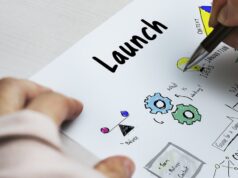In today’s fast-paced and collaborative work environment, disruptions in team cohesion can lead to significant challenges in productivity and morale. Team fallout, where misunderstandings, communication breakdowns, or unresolved conflicts occur, can result in a demotivated workforce and hinder organizational success.
The good news is that there are effective solutions that can help rebuild trust and foster stronger relationships among group members. One such solution is leveraging psychometric tools, which can help identify and resolve the root causes of team disruptions.
Key Points
- Team fallout stems from poor communication, unclear roles, and differing work styles.
- Unresolved conflicts can lead to disengagement, reduced productivity, and turnover.
- Psychometric profiling offers a structured way to address issues effectively.
- Leaders with emotional intelligence play a critical role in rebuilding trust.
- Long-term strategies like regular feedback and team-building promote harmony.
Understanding Team Fallout: Causes and Impacts

Team fallout often arises from poor communication, differing work styles, and a need for clarity regarding roles and expectations. Conflicts are bound to occur when members misunderstand each other’s approaches or fail to communicate effectively. Over time, this leads to a breakdown in collaboration and can have long-lasting effects on morale and performance. If left unresolved, the result is often disengaged employees, reduced productivity, and turnover.
However, businesses can rebuild team cohesion by identifying the underlying causes of the conflict and applying appropriate strategies. Tools that increase self-awareness, improve communication, and align members’ goals are essential to minimizing the impact of conflict.
How Psychometric Profiling Can Help Solve Team Issues
One of the most effective solutions for team fallout is psychometric profiling, which helps teams better understand each other’s personality traits, communication preferences, and working styles. Psychometric tools such as the C-me Profiling system from Colour Profiling offer a structured way to assess each member’s personality traits.
By creating a common language and framework for communication, these tools allow teams to identify where misunderstandings may arise and develop strategies to mitigate potential conflicts.
Using these insights, managers and leaders can help employees understand why certain behaviors might irritate or frustrate others, which is crucial for resolving conflicts. The goal is not just to fix the fallout but to prevent future issues by increasing self-awareness and empathy among team members. This leads to a more harmonious and productive work environment.
Recognizing Early Warning Signs of Fallout

Preventing team fallout begins with recognizing the early signs of disruption. Managers should watch for:
- A sudden drop in productivity or quality of output.
- Increased absenteeism or lack of participation in discussions.
- Persistent tension or visible discomfort among team members.
By addressing these signs early, leaders can intervene before conflicts escalate.
Building Stronger Relationships Through Communication
Improving communication is a significant factor in resolving team conflict. With the right tools, teams can learn to express their concerns, expectations, and needs in a way that minimizes misunderstandings. Psychometric profiling allows team members to recognize their preferred communication styles and adjust their approach when interacting with others who may have different styles.
For example, some people may prefer detailed, data-driven conversations, while others might focus on big-picture thinking. By understanding these differences, teams can adapt communication to avoid frustration and build stronger relationships. Moreover, clear communication helps prevent the build-up of unresolved issues that can escalate into more significant conflicts.
Creating a Feedback Loop for Continuous Improvement

Implementing a structured feedback loop helps teams maintain open lines of communication. This involves:
- Regular team meetings focused on addressing concerns and aligning goals.
- Anonymous surveys for honest feedback.
- Creating action plans based on collective input.
A feedback loop encourages accountability and ensures ongoing improvement.
Developing Leadership Skills to Navigate Team Dynamics
A skilled leader understands the importance of fostering an open, inclusive environment where members feel comfortable voicing their concerns. Leaders can use tools like psychometric profiling to identify potential areas of tension within the team and address them proactively. For instance, leaders can facilitate discussions based on the insights gained from profiling, creating space for members to express their concerns in a structured, respectful way.
Additionally, leaders with self-awareness and empathy are better positioned to guide their teams through conflict. This type of leadership is significant when dealing with teams that have experienced fallout, as it helps rebuild trust and cohesion among the group.
Offering leadership training that includes emotional intelligence and conflict resolution skills ensures that team leaders are well-prepared to navigate difficult conversations and guide their teams through challenging times.
Building Trust Through Team-Building Activities
Team-building activities can rebuild trust and create stronger connections among team members. Some effective activities include:
- Collaborative problem-solving exercises to encourage cooperation.
- Informal outings to foster relationships in a relaxed setting.
- Role-reversal tasks to build empathy for others’ perspectives.
Including these activities periodically can help maintain team morale.
Implementing Long-Term Strategies for Harmony

While resolving fallout requires immediate attention, it is essential to implement long-term strategies that promote ongoing team harmony. Encouraging regular check-ins, fostering a culture of feedback, and offering opportunities for team-building are crucial steps in maintaining healthy dynamics. Additionally, creating a safe space for open communication ensures that potential conflicts can be addressed before they escalate.
Regular use of psychometric tools can help track team progress and highlight any new areas of concern. This ongoing process of self-awareness and development can prevent future fallout and foster a positive, collaborative environment. Teams that continuously engage with these solutions are more likely to maintain strong cohesion, productivity, and morale in the long run.
Table:Comparing Strategies
| Strategy | Purpose | Benefits |
| Psychometric Profiling | Understand team dynamics | Improved communication |
| Regular Feedback | Address ongoing issues | Increased accountability |
| Leadership Training | Enhance conflict resolution | Stronger team guidance |
| Team-Building Activities | Foster trust and connections | Boosted morale and cohesion |
The Power of Preventing Fallout Through Solutions
Ultimately, the most effective way to prevent and resolve team fallout is through a combination of proactive solutions that address individual and group dynamics. By utilizing tools like psychometric profiling, improving communication strategies, and developing strong leadership capabilities, businesses can repair damaged relationships and foster a culture that values understanding and collaboration.
By embracing these solutions, businesses can strengthen their internal culture, improve employee engagement, and ensure that their teams remain resilient in the face of challenges. Addressing the issue of disrupted team cohesion early and strategically is the key to creating a cohesive and successful workforce that thrives in a competitive environment.




